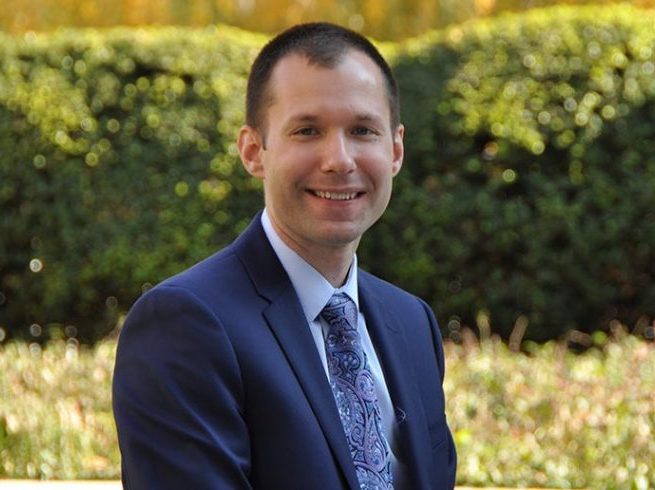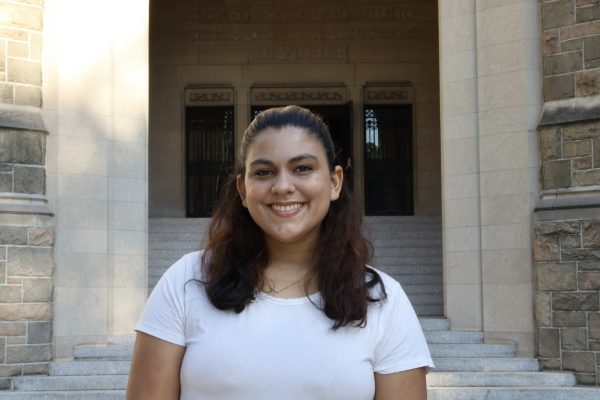The NYC Carbon Challenge refers to a voluntary initiative introduced in 2007 by former NYC Mayor Mike Bloomberg. The City of New York describes the project to be a partnership between the Mayor’s Office of Climate and Environmental Justice and the leaders of the institutions and companies who join. The initiative was made to encourage leaders throughout New York City to do their part in helping the planet by reducing the carbon emissions of their businesses or organizations by 30% before 2030. The Mayor’s Office of Climate and Environmental Justice pledged to help by providing those who took the initiative with support, resources and recognition of their efforts.
Fordham University is among 18 universities who have joined the NYC Carbon Challenge, including Columbia University, New York University and Fashion Institute of Technology. Sustainability at Fordham states that Fordham University was a founding signatory of the challenge, having joined it in 2007 when the project debuted. Fordham’s initial commitment was to lower their carbon emissions by 30% as the initiative outlined. However, in the fall of 2017, Fordham decided to expand their challenge by pledging to reduce carbon emissions by 40% by 2030. As of now, Fordham University’s carbon emissions intensity is 31.77% lower than in 2005, with a 22.6% reduction in energy consumption, via Sustainability at Fordham.
Marco Valera, vice president of administration, was the associate vice president of facilities management at the time of the NYC Carbon Challenge’s introduction and co-chaired the Sustainability Committee. Valera has been a part of Fordham’s participation in the challenge since the beginning and continues to help and support it. When asked if Fordham University would likely extend their challenge once again after meeting their new goal, he confidently replied, “Yes! Yes, we [Fordham] really want to be a leader in this area.” Valera also stated that Fordham has many projects under consideration at the moment to further reduce greenhouse gas emissions. One of such projects is the introduction of geothermal energy, specifically at the Rose Hill campus. Valera explained that they “are hoping to have something in the next few years but it’s under review right now.”
Among the changes that the university has already made that have aided in the reduction of carbon emissions, Valera noted “two feature projects” which were the addition of solar power and the decarbonization of Fordham’s fossil fuel plant. Valera explained that the solar power comes from the sources, the first of which is solar panels on the top of the garage which provide about a megawatt of power. The second source, Valera explained saying, “We also have agreed to take on 2.6 megawatts of power from a solar ray offsite in Staten Island.” Valera stated that the agreement is 20+ years long. Between these two sources, the university is able to use up to 30% solar energy. Valera explained, “The thing with solar is it varies, it’s really really good in the summer, you get a lot of solar and less power generation after that because of the angle of the sun and a bunch of other things. But at peak capacity, it’s about 30% of Rose Hill campus electrical use.”
Valera went on to explain that the university is working to move away from the use of natural gas and fossil fuels in the heating systems of the university. He explained that this is a long-term goal, likely to occur over the next 10 to 20 years, but that as the university continues to undergo renovations, they are making the switch from fossil fuels to heating methods such as heat pumps and geothermal energy.
Valera additionally explained, “The biggest challenge for any large institution like us who have these intricate plants, and even individual buildings, is [that] retrofitting them is difficult and expensive. I wish it weren’t so but that’s just the way it is, it’s not as easy as one could think.” He added that New York City is the most expensive market for construction in the United States, which accentuates the unfortunate costs associated with environmental changes.
Fordham provides an especially interesting dynamic in which to apply these carbon reduction adjustments because some of the university buildings are new and efficient whereas others are very old constructions with much less efficient energy use. An example of this is Keating Hall which is still heated by old fashion radiators. Valera explained that the university has plans to implement a new technology in Keating in the next year or so, saying, “There is a new technology that in essence puts a Nest-like device on each radiator, so it operates independently. So, what that’s going to do is, sometimes one side of the building is hotter than the other side, etc., these things will talk to each other and adjust the amount of steam that’s being used.” This will lower the amount of steam being used. The university expects that this change could potentially decrease Keating energy use by 20%.
Fordham University hopes to do the best they can to combat the climate crisis. Valera and the university encourage people to be conscious of their environmental impact. Anyone interested in learning more can turn to Sustainability at Fordham or the Mayor’s Office of Climate and Environmental Justice for Fordham and city-wide initiatives.








































































































































































































